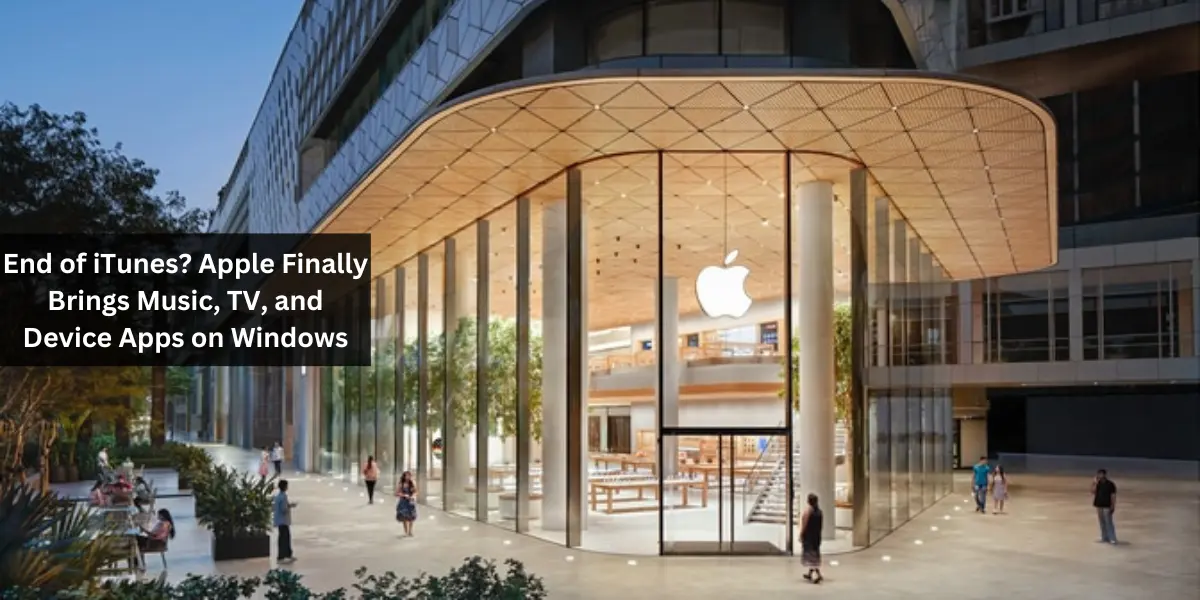Remember when iTunes was the one-stop-shop for all your digital needs? Well, those days might be numbered. In a move that’s been long anticipated by Windows users around the globe, Apple has finally decided to diversify its offerings by launching separate Music, TV, and Device Management apps for the Windows platform. Is this the end of the road for the iconic iTunes on Windows? Let’s dive into what this shift means for users and the digital landscape.
The Evolution of iTunes
From Humble Beginnings to Digital Juggernaut
iTunes started as a simple music player and organizer but quickly became the backbone of Apple’s digital empire, handling everything from music to movies, TV shows, and device synchronization.
The All-in-One Approach: Blessing or Curse?
While iTunes’ all-encompassing nature was innovative, it also became bloated and unwieldy, leading to user frustration and calls for a more streamlined approach.
Apple’s Strategy Shift
Embracing Specialization
Learn why Apple decided to split iTunes into separate apps, aligning its strategy on Windows with what it’s already done on macOS Catalina.
What This Means for Windows Users
Discuss the immediate benefits for Windows users, including faster, more efficient, and task-specific apps.
Introducing the New Apps
Apple Music App for Windows
Delve into the features of the new Apple Music app, highlighting its sleek interface, improved performance, and enhanced music discovery features.
Apple TV App: A New Home for Entertainment
Explore the Apple TV app, focusing on its integration with Apple TV+ and other streaming services, personalized recommendations, and 4K support.
Device Management Redefined
Examine the new Device Management app, detailing how it streamlines syncing, backups, and updates for iPhones, iPads, and iPod touches without the need for iTunes.
The Future of iTunes
Is iTunes Really Going Away?
Speculate on the future of iTunes for Windows, considering whether it will be phased out entirely or retained for specific functionalities.
How the Transition Affects Users
Discuss how the transition from iTunes to separate apps will affect users’ day-to-day interactions with their Apple devices and media libraries.
Preparing for the Change
How to Transition Your Library
Offer tips on how users can transition their existing iTunes library to the new apps without losing data.
What to Expect During the Transition
Set realistic expectations for the transition process, including potential hiccups and learning curves.
Conclusion
The introduction of Music, TV, and Device Management apps on Windows marks a significant shift in Apple’s strategy, one that promises to enhance the user experience by replacing the cumbersome iTunes with more focused, efficient tools. As we bid farewell to the era of iTunes dominance, it’s clear that Apple is committed to evolving with its users’ needs, ensuring that its ecosystem remains as vibrant and user-friendly as ever.
FAQs
Will my existing iTunes library automatically transfer to the new apps?
Detail how users can migrate their iTunes library to the new apps, including any steps they need to take manually.
Can I still purchase music and movies through the new apps?
Explain how the new apps handle purchases and whether there are any changes from the iTunes Store model.
What happens to my iTunes gift cards and credits?
Clarify how iTunes gift cards and account credits are affected by the transition to new apps.
Will the new apps support older versions of Windows?
Discuss which versions of Windows the new apps are compatible with and any limitations users might face.
How does this affect iPhone and iPad backups and updates?
Detail the process for backing up and updating devices using the new Device Management app, noting any improvements or differences from iTunes.

